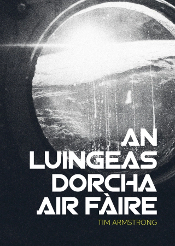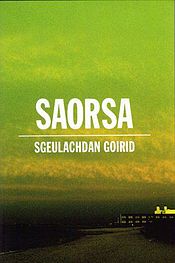The fear that Gaelic is dying is nothing new. Folk have been warning that Gaelic could be dead ‘in ten years time’ since at least the 1980s, and folk have been agonizing about the imminent death of the language for much longer than that, but while not new, I would argue that this death discourse is potentially self-sabotaging and damaging to our language-revival movement.
Successful language revivals are, first and foremost, vibrant social movements, so as activists, we want to frame our revival in a way that inspires folk to get involved, but as with any social movement, it is not aways easy to know the best way to do this. For example, there has been quite a bit of public debate recently, and a fair amount of research, on this question with regards to climate change. Should we frame climate change as an existential crisis (so called ‘emergency framing’) or would more positive, hopeful framing be more effective for motivating folk to take action?
The truth is we don’t know. The results of the best current research are mixed, but there is some data to indicate that emergency framing can, in some situations, be less effective than more positive messaging, and while this question has not been specifically studied in the Gaelic context at all yet, I would argue there are good reasons to be at least concerned that emergency framing might also serve to put off folk from getting involved in our language revival.
For instance, concider how parents might repond to the death discourse. Would parents be more or less likely to speak Gaelic with their children or to enrol their children in Gaelic-medium education if they think that the language is failing? Quite rightly, parents want to give their children the skills they will need to succeed in life, but the death discourse gives the opposite impression of the language: it gives the impression that Gaelic is increasingly useless.
Or consider how politicians might interpret this discourse. As Gaelic activists, we are a very small group. Depending how you define a ‘Gaelic activist’, there are a few dozen of us, or maybe a few hundred at most, so we don’t constitute a meaningful voting block by ourselves. To rally politicians to our cause, we have to convince them that our enthusiasm for Gaelic is shared by a significant percentage of the general public, but the death discourse, again, gives the opposite impression. From the perspective of politicians, it might appear politically naive, and possibly even undemocratic, to continue to dedicate public resources to a language that their own constituents appear to be abandoning.
Yes, Gaelic is a threatened language, and I am not arguing that we should lie to people, but I am arguing that we should tell a different story: a more hopeful and better balanced story, and thereby, a more accurate one. Any language revival is a mixture of good and bad news, and while we have to be mindful of where we need to do more work, focussing almost exclusively on our fear that Gaelic will soon be dead actually misrepresents the situation. It may feel cool-headed, clear-eyed and realistic to some activists, but in reality, it is none of these things.
The problem with emergency framing in this respect is that it is both too optimistic and too pessimistic at the same time. It is too optimistic because it asserts that there is still a vernacular language left to ’save’, but as I have argued before, that horse bolted in the 1960s and 1970s, and there is no real prospect of reviving Gaelic as the principal vernacular language in the Islands or anywhere else in Scotland in either the short or medium term.
But also, emergency framing is too pessimistic because it asserts that Gaelic dying, when the truth is that, by many measures, Gaelic has never been more popular in Scotland. There is exactly zero chance that Gaelic will die out as an everyday spoken language in the Islands or in Scotland in general in any of our lifetimes. Gaelic is changing—has changed—from a language spoken in territorial speech communities to one spoken in language networks, but it has not died. Engaged scholarship and effective advocacy alike should be about helping the Gaelic-speaking world to understand this change and figure out how to make it work.
There is a persistent belief, though, shared by many Gaelic activists and even some scholars, that territorial speech communities are the sin qua non of living languages, but if we want to strengthen Gaelic as a vital, widely-spoken language into the 21st century, we have to work with Gaelic as it is in the real world, not as we wish it was. We have to work with those who are actually interested in learning, using and passing on the language, not force our revivalist aspirations on individuals or communities because we believe they should save their language.
In 1998-99, as part of his PhD research, Alasdair MacCaluim conducted a detailed survey of 643 learners and new speakers of Scottish Gaelic. One of the questions he asked was to what degree they either agreed or disagreed with the following statement: “Gaelic can only be saved if Gaelic speaking communities continue to exist in the Islands”, and he found that a clear majority of respondents, 67.6%, either agreed or strongly agreed with this assessment. (p. 264)
And this is, I think, the heart of the problem. Many Gaelic speakers, including many learners and new speakers, need Gaelic to exist in the Islands as a common vernacular to satisfy their own understanding of Gaelic as a real, living language, but folk on the Islands were not put on this planet to serve as a means to someone else’s ends. They will make their own decisions, and the reality is that, to date, a significant proportion of Islanders have decided that they are not particularly interested in the Gaelic revival, at least for now.
There are, of course, plenty of folk living in the Highlands and Islands of Scotland who are passionate about Gaelic, who want to learn, use and pass it on, and they should be unstintingly supported, but there is also huge interest in learning and using Gaelic throughout Scotland, and if all these interested folk, wherever they may be, could be helped to become active Gaelic speakers, Gaelic’s future in Scotland would be really bright.
There is no limit to what we can achieve; we just have to fight together for the structures (and money) required to turn interest into ability and then ability into use, but to do this, to build the kind of vibrant, optimistic social movement that could successfully pressure the government to genuinely support the Gaelic revival, I believe we need to tell a different story.
Post script: here are a few examples of some Gaelic developments that are making me feel optimistic just now:
Cnoc Soilleir, South Uist – Cnoc Soilleir is an inspiration. Local grassroots activists created a centre that should serve as an exemplary model for community-based language and cultural development throughout Scotland and around the world.
Cultarlann, Inverness – Another amazing grass-roots-built Gaelic cultural centre, this one in an urban setting.
Gaelic in Sleat – Several generations of Gaelic activists have built a level of institutional support for the language in Sleat that actually appears to be delivering a real, measurable revival. The recent census results here are very encouraging.
Gaelic numbers in Scotland as a whole – Some may talk these numbers down, and it is true that we don’t yet know who these new speakers are or what sort of Gaelic they can speak, but the fact that 12 thousand more people rated their own Gaelic abilities or those of their children highly enough that they were willing to record themselves or their children as Gaelic speakers is unquestionably significant positive news.
Ionad Gàidhlig Dhùn Èideann – Edinburgh Gaels are nothing if not persistent. It took Gaelic activists in the capital 13 years to win a Gaelic primary school, and they are still fighting the council for a Gaelic high school. It is taking them even longer to win the battle for a Gaelic centre in the city, but I wouldn’t bet against them.
“Gaelic could ’die’ in ten years.” The Scotsman, 7 December, 1983, p 7.
MacCaluim, Alasdair. (2002) Periphery of the periphery? Adult learners of Scottish Gaelic and reversal of language shift. PhD thesis, University of Edinburgh.
By analysing Gaelic poetry, Wilson McLeod shows how Gaels were concerned about the possible death of the language as early as the late 18th century: McLeod, Wilson (2003) “Language Politics and Language Consciousness in Scottish Gaelic Poetry.” Scottish Gaelic Studies 21: 91–146.
For a good review of the many questions and uncertainties around ‘emergency frames’ see: James Patterson, Carina Wyborn, Linda Westman, Marie Claire Brisbois, Manjana Milkoreit and Dhanasree Jayaram (2021) ‘The political effects of emergency frames in sustainability.’ Nature Sustainability 4, 841–850.
For an interesting recent article empirically looking at this question see: Marjolaine Martel-Morin and Erick Lachapelle (2022) ‘Code red for humanity or time for broad collective action? Exploring the role of positive and negative messaging in (de)motivating climate action.’ Frontiers in Communication 7.
For a scholarly critique of the death discourse in the Scottish Gaelic context, see: MacEwan-Fujita, Emily (2006) “Gaelic Doomed as Speakers Die Out?: The Public Discourse of Gaelic Language Death in Scotland.” In Wilson McLeod (ed), Revitalising Gaelic in Scotland: Policy, Planning and Public Discourse. Edinburgh: Dunedin Academic Press, 279-293.
And for a scholarly critique from a North-American perspective, see: Davis, Jenny. (2017) “Resisting rhetorics of language endangerment: Reclamation through Indigenous language survivance.”, Language Documentation and Description 14, 37-58. Thank you to Prof Martin Kohlberger for drawing my attention to this article.
Photo: Diego Delso, delso.photo, License CC-BY-SA






